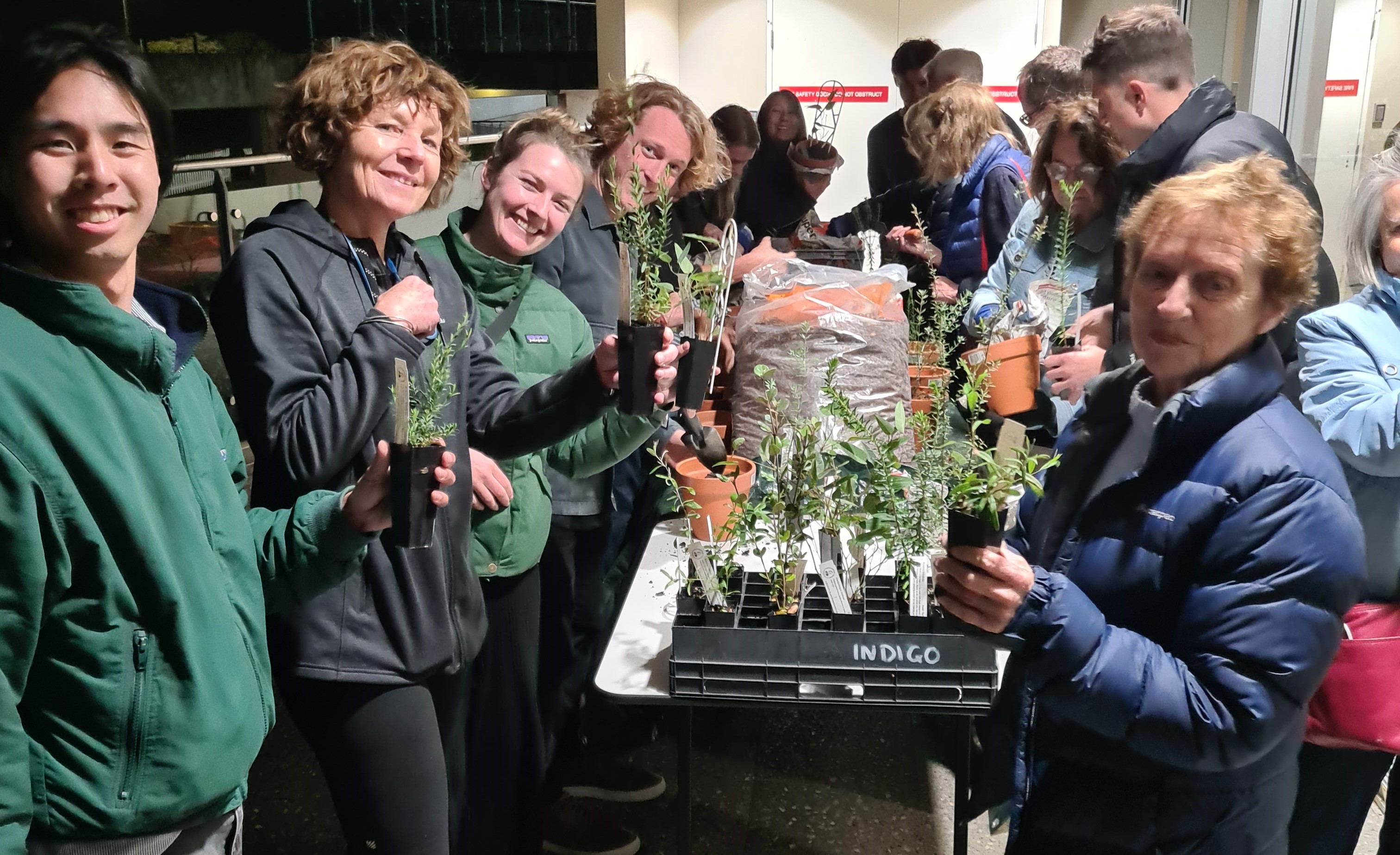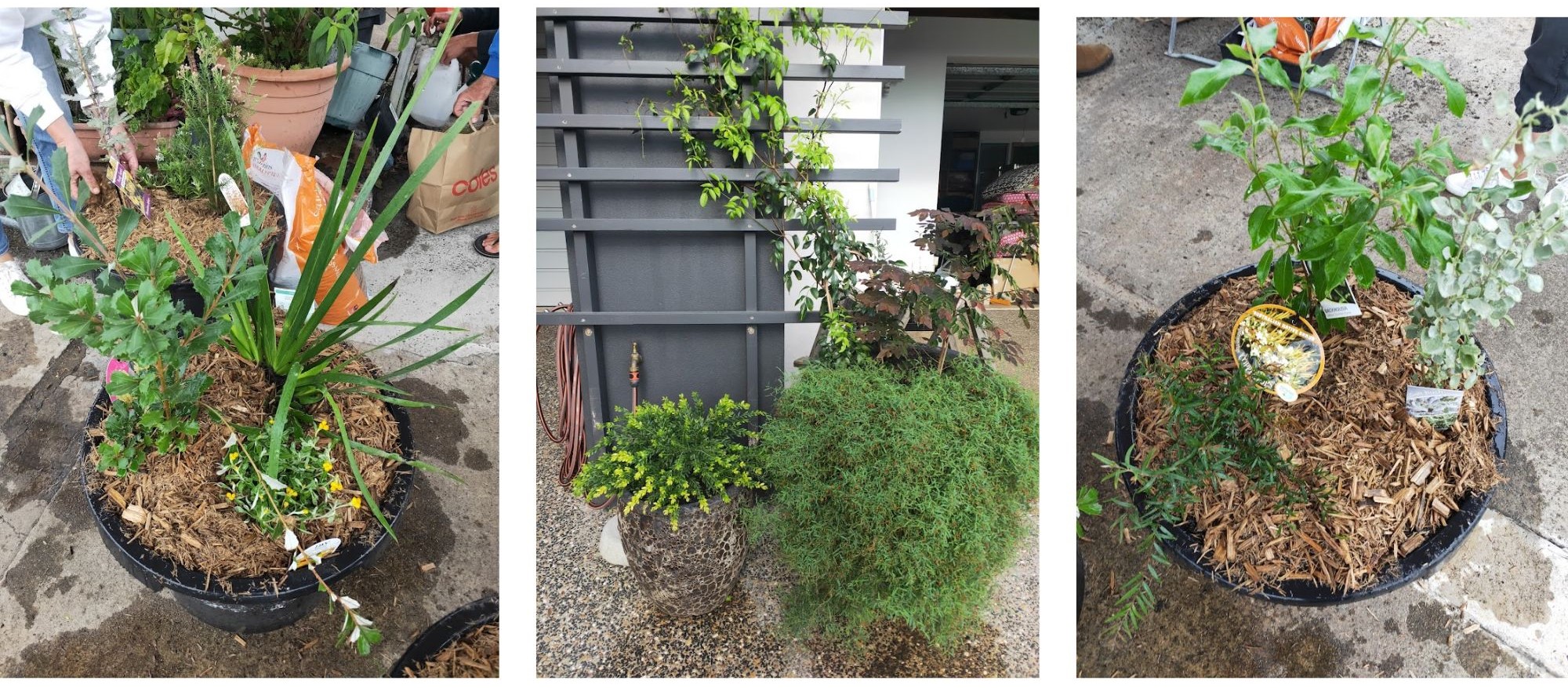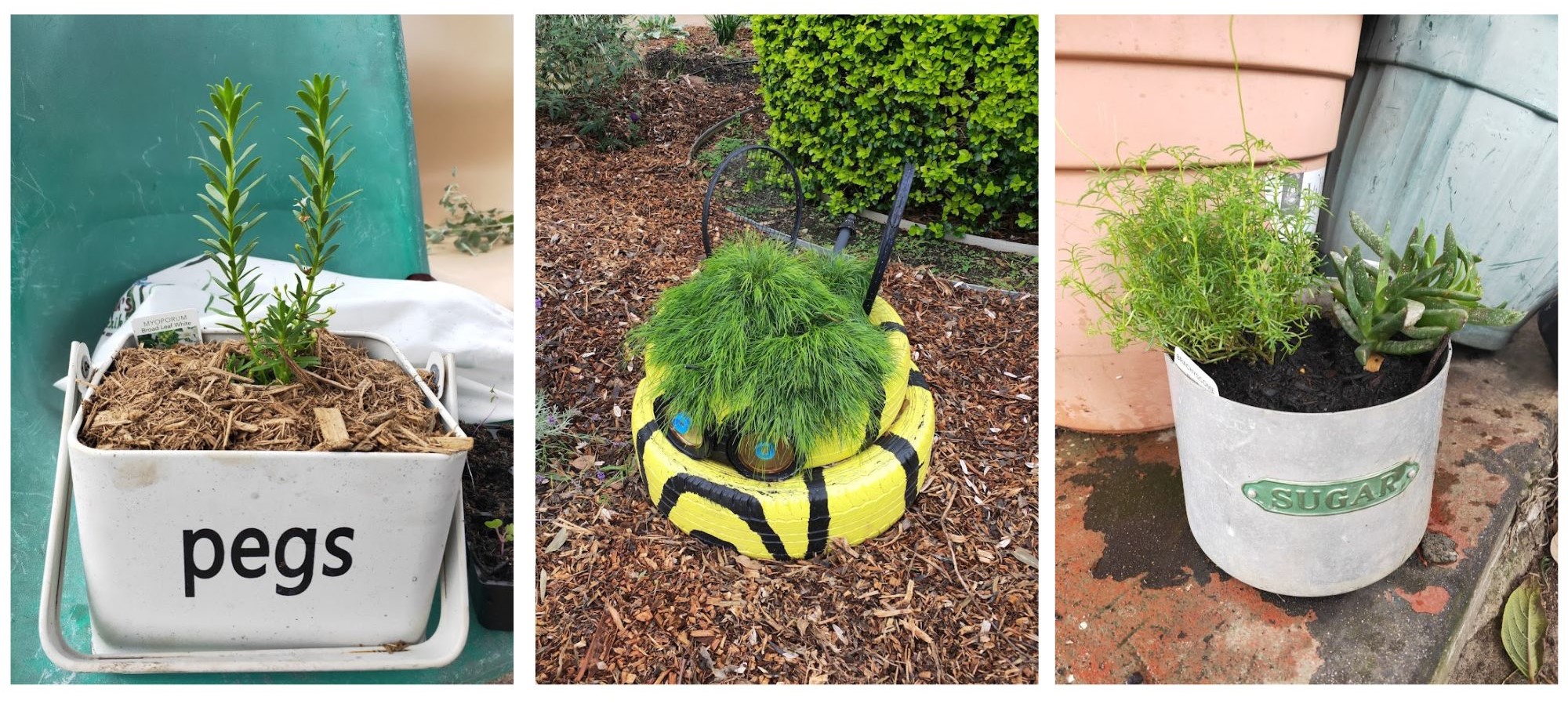Locally native plants are a great option for balconies or courtyards, as they can withstand the harsh elements such strong, salty winds and full sun. Read on for some simple tips and tricks to ensure your native pot plants survive and thrive.
Local resident Jennifer McMillan, who works at Planet Ark and attended last month’s Growing Native Plants in Pots workshop, shares her top five takeaways to follow for successful native gardening in pots.

Native gardens on balconies, windowsills or courtyards not only beautify a space, but they can play an important role in providing food and shelter for local wildlife. They can act as a steppingstone between existing wildlife corridors, attracting beautiful birds, bees, lizards and other insects. There are lots of delicious edible native plants to feed you too!
But because they are separated from the earth, potted natives rely on you for all their needs: water, food and the right conditions. It’s important to set them up for success to give them the best chance of survival.
Here are the top tips I gleaned from Landscape architect and horticulturist Narelle Happ from Garden for Life at the recent Waverley Council Growing Native Plant’s in Pots workshop.
1: Soil, mulch and fertiliser
Native plants require a native potting mix when grown in pots and containers. This is because native Australian plants are naturally very phosphorus sensitive. High levels of phosphorus can cause the leaves to go yellow. A premium quality native potting mix will ensure good water holding capacity and encourage a healthy growing environment. Put a 5cm layer of mulch on the top, but keep it away from the stem. This will reduce the amount of water that evaporates from the soil and help keep the soil healthy.
Like all living things, native plants need nutrients to survive. Use a native plant fertiliser at the time of planting and then several times a year. A seaweed plant tonic can be used at the time of planting, then two weeks after and four weeks after planting. This helps with healthy roots and to strengthen the cell walls.
2: Watering
Watering is determined by the plant species, environmental factors, type of pot, and weather. A good rule of thumb is to use your finger as a guide. If the soil is moist, wait another day. If the weather is very windy or hot, check plants daily for watering requirements and move into the shade if drying out too quickly or you are going away. Ensure that the plants don’t sit in a saucer of water, which will cause the soil to become anaerobic and the soil will start to smell.
 3: Pot choices and design ideas
3: Pot choices and design ideas
- Terracotta is a porous pot material that benefits from being sealed. Plants may require more attention to watering as the water evaporates more frequently than with other pot types. Use a pot sealer or a plastic pot inside the terracotta to make it easier to move around.
- Fibreglass is a lighter weight material makes this style of pots easier to move around.
- Upcycle objects and turn them into pots. Get creative and reuse old objects: tea pots, wine barrels, tins, cartons, bottles and hanging baskets.
- Be aware the darker the pot the more heat it will attract.
- Look for a good drainage hole or drill more holes if needed and put mesh over the holes.
- Group pots together, to create a mini ecosystem, and reduce evaporation.

4: Pruning
In nature, plants are constantly being pruned by animals, the weather and environmental conditions. Pruning is essential to encourage healthy growth and abundant flowers. Prune initially, then twice a year, this will help create a tighter bushier plant with more flowers.
5: Plant species
Select a mix of plant species that will provide a range of food resources for birds and bees and other pollinators. Use combinations of different plants in structure, colour and flowering times and select local plants that are suited to your environmental conditions.
Some good suggestions for the Waverley area include:
- White correa / Correa Alba – Grey foliage with white flowers, very wind tolerant.
- Pink spider grevillea / Grevillea Sericea – medium fast growing shrub with pink flowers.
- Heath-leaved Banksia / Banksia ericifolia – orange – red flower spikes, fast growing and salt tolerant.
- Peach blossom tea tree / Leptospermum squarrosum - Pink flowers, prickly leaves, salt tolerant.
Check out the Waverley Habitat Gardening Guide for more local plants that are suitable for pots.
A selection of edible native plants suited to the Sydney climate include:
- Warrigal Greens – Tetragonia tetragonioides Use the leaves to make warrigal greens pesto.
- Native Thyme – Prostanthera rotundifolia A natural mosquito repellent and can be used in a variety of recipes.
- Blue flax lily / Dianella caerulea – sedge type plant with purple flowers and edible purple berries
- Old-man Saltbush – Atriplex nummularia Silver grey foliage can be dried and crushed to flavour savoury dishes and bread.
- Lemon Myrtle – Backhousia citriodora Can be used for tea and in desserts.
- Finger Lime – Citris australasica thorny understorey shrub that produces citrus like fruits.
Waverley Council runs a Living Connections program with free native seedlings and resources on habitat gardening.
About the Author
Jennifer McMillan is a Communications Manager at Planet Ark on the National Tree Day Campaign. She enjoys bushwalking, caring for wildlife and is a Bronte local.

